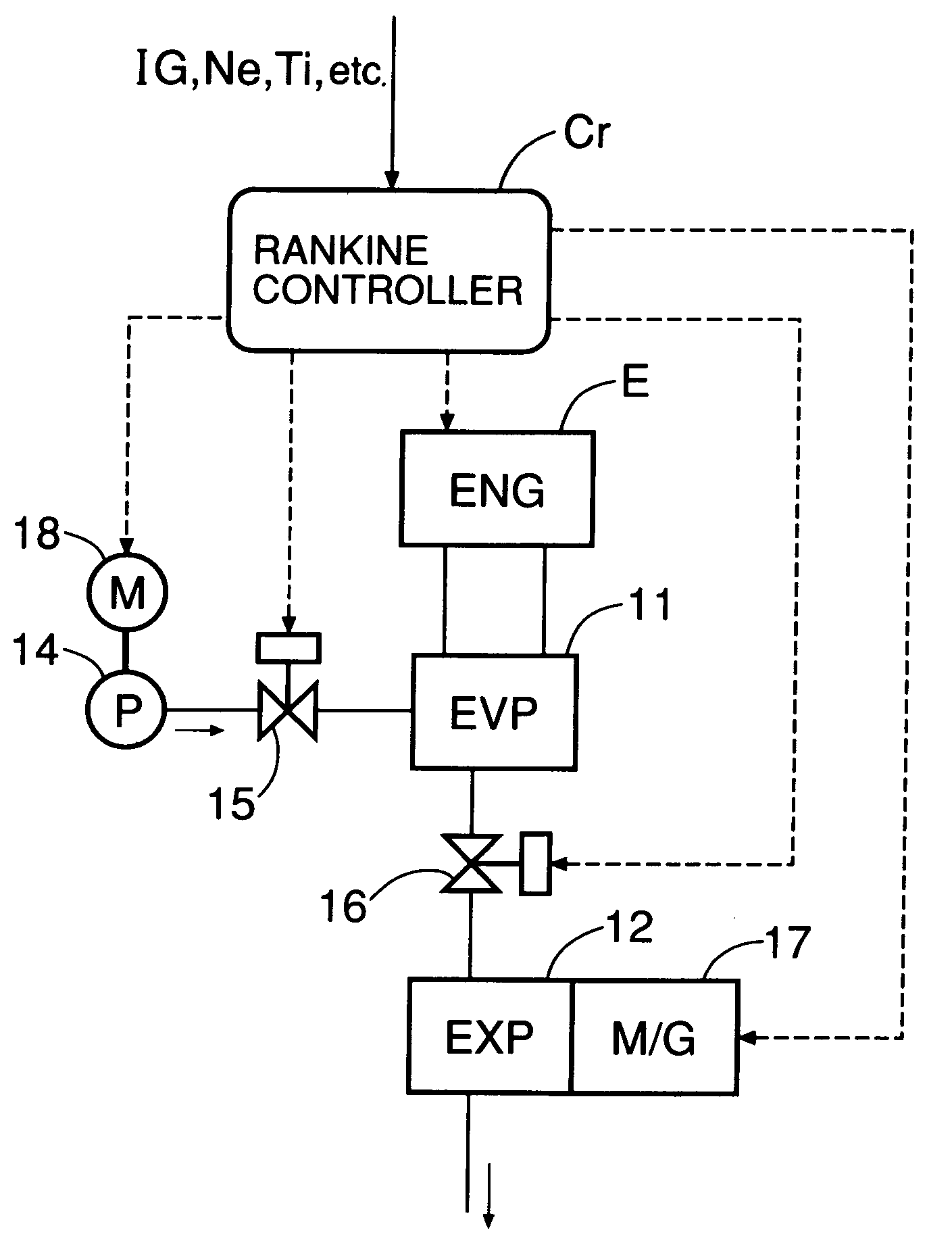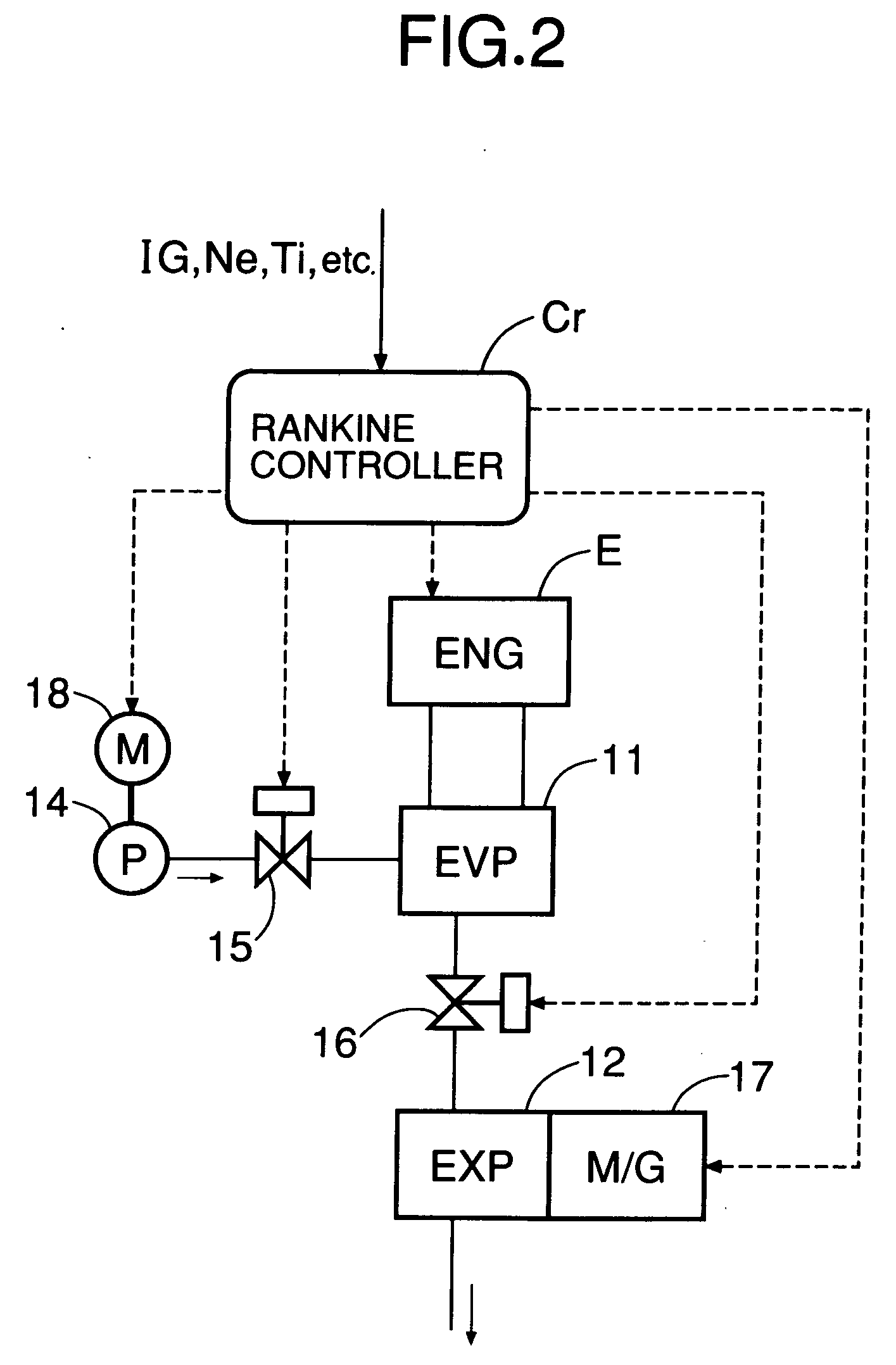Rankine cycle system
a cycle system and cycle technology, applied in steam engine plants, machines/engines, mechanical equipment, etc., can solve the problems of high temperature of engine compartments, rapid increase in the rotational speed of expanders, and loss of energy recovery efficiency, so as to achieve the effect of utilizing thermal energy
- Summary
- Abstract
- Description
- Claims
- Application Information
AI Technical Summary
Benefits of technology
Problems solved by technology
Method used
Image
Examples
Embodiment Construction
[0035]FIG. 1 shows the overall arrangement of a Rankine cycle system R to which the present invention is applied. The Rankine cycle system R recovers thermal energy of exhaust gas of an engine E and converts it into mechanical energy. The Rankine cycle system R includes an evaporator 11, an expander 12, a condenser 13, and a water supply pump 14. The evaporator 11 heats water with the exhaust gas discharged by the engine E so as to generate high temperature, high pressure steam. The expander 12 is operated by the high temperature, high pressure steam generated by the evaporator 11 so as to generate mechanical energy. The condenser 13 cools decreased temperature, decreased pressure steam that has completed work in the expander 12 so as to turn it back into water. The water supply pump 14 pressurizes water discharged from the condenser 13, and supplies it to the evaporator 11 again.
[0036] As shown in FIG. 2, an open / close valve 15 for cutting off the supply of water is disposed betwe...
PUM
 Login to View More
Login to View More Abstract
Description
Claims
Application Information
 Login to View More
Login to View More - R&D
- Intellectual Property
- Life Sciences
- Materials
- Tech Scout
- Unparalleled Data Quality
- Higher Quality Content
- 60% Fewer Hallucinations
Browse by: Latest US Patents, China's latest patents, Technical Efficacy Thesaurus, Application Domain, Technology Topic, Popular Technical Reports.
© 2025 PatSnap. All rights reserved.Legal|Privacy policy|Modern Slavery Act Transparency Statement|Sitemap|About US| Contact US: help@patsnap.com



